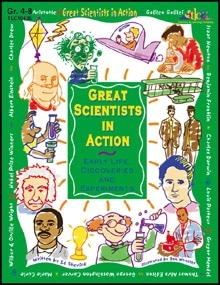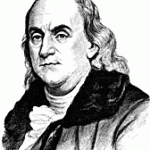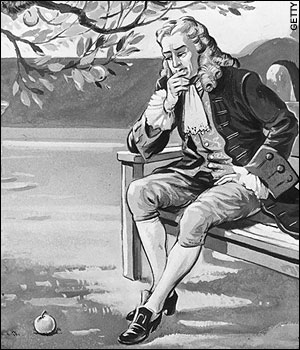
He suggested to start out teaching science on the foundation of history. The explanation was that children will learn equations and the periodic table for many years and still may not have developed an appreciation for science. The curiosity a child needs to enhance his learning experience comes from people and connections and not from diagrams and equations. Science is about sparking imagination and exploring the world around you.
In my quest to find a curriculum to fit this concept I discovered, Great Scientists in Action: Early Life, Discoveries, and Experiments. This is a fun book that you can easily download from CurrClick for under $10. It’s perfect for one term or semester of school. The book is divided into chapters that center on different scientists and their discoveries from the past. At the end of every chapter there are simple experiments to reinforce what was learned. Your student will learn about Aristotle to Benjamin Franklin to George Washington Carver. There are 
My children finished this book in one term that lasts 12 weeks. You can easily tailor this to your needs. You add this into your normal science curriculum by just bringing out a relevant chapter as needed. You can focus on one scientista month and use the chapter as a spring board to more in depth assignments. We used this book twice a week as a crash course into the history of science. My kids loved this book and looked forward to the assignments. I felt it inspired a sense of curiosity and enhanced their current studies in history and science. My daughter is 11, and she used this book as an independent study.


This is exactly the kind of book I like — living biographies tied in with scientific concepts. I wish there were more of this type of book. It sort of reminds me of the Beautiful Feet History of Science curriculum.
Thanks for the recommendation. I also love that I can download it immediately from Currclick.